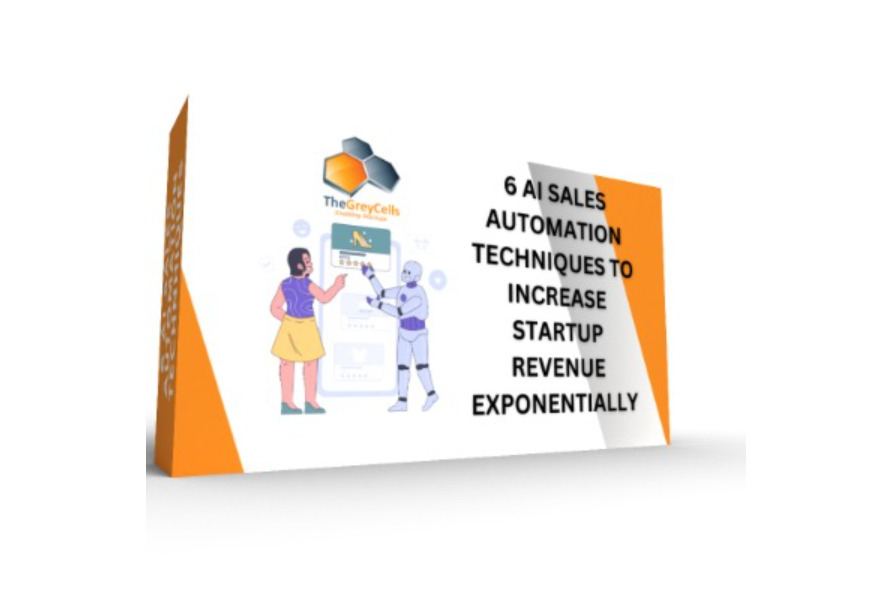“The greatest threat to our planet is the belief that someone else will save it.” – Robert Swan
The fashion industry is undergoing a significant transformation, with increasing awareness about its environmental impact and labor practices. Consumers are seeking more sustainable and ethical options, presenting a unique opportunity for entrepreneurs to launch a sustainable fashion startup. This guide will take you through the journey of building a sustainable fashion brand, from concept to execution, and offer insights into creating a successful and impactful business.
Identifying Your Niche
The first step in launching a sustainable fashion startup is identifying your niche. Here are some potential areas within sustainable fashion to consider:
- Eco-Friendly Materials: Focus on organic, recycled, or biodegradable materials.
- Ethical Manufacturing: Ensure fair labor practices and transparent supply chains.
- Zero-Waste Fashion: Design garments that produce minimal waste during production.
- Upcycled Clothing: Transform old or discarded clothing into new, fashionable items.
- Vegan Fashion: Use alternatives to animal-derived materials, such as plant-based leathers.
Market Research and Validation
Conduct thorough market research to ensure your idea has a market:
- Surveys and Interviews: Directly gather insights from potential customers about their preferences for sustainable fashion.
- Competitor Analysis: Study existing sustainable fashion brands to identify gaps and opportunities for differentiation.
- Industry Reports: Review studies on sustainable fashion trends, including consumer behavior and market size.
Social Media Analysis: Monitor trends and discussions on platforms like Instagram and Pinterest to understand what appeals to your target audience.
Creating a Business Plan
A solid business plan serves as a roadmap for your startup. Here’s what to include:
- Executive Summary: Provide an overview of your sustainable fashion brand, including your mission and vision.
- Market Analysis: Present findings from your market research, highlighting demand for sustainable fashion and key competitors.
- Business Model: Outline your revenue streams, such as direct-to-consumer sales, wholesale, and subscription models.
- Product Line: Describe your sustainable fashion products, including materials, design concepts, and target market.
- Marketing Strategy: Detail your approach to branding, social media marketing, influencer collaborations, and content marketing.
- Operations Plan: Explain how you will source materials, manufacture products, and manage inventory and logistics.
Financial Plan: Provide financial projections, including startup costs, revenue forecasts, and funding requirements.
Creating a Business Plan
A solid business plan serves as a roadmap for your startup. Here’s what to include:
- Executive Summary: Provide an overview of your sustainable fashion brand, including your mission and vision.
- Market Analysis: Present findings from your market research, highlighting demand for sustainable fashion and key competitors.
- Business Model: Outline your revenue streams, such as direct-to-consumer sales, wholesale, and subscription models.
- Product Line: Describe your sustainable fashion products, including materials, design concepts, and target market.
- Marketing Strategy: Detail your approach to branding, social media marketing, influencer collaborations, and content marketing.
- Operations Plan: Explain how you will source materials, manufacture products, and manage inventory and logistics.
Financial Plan: Provide financial projections, including startup costs, revenue forecasts, and funding requirements.

THE 7-STEP STARTUP SUCCESS FORMULA - DR. ANU KHANCHANDANI
Every entrepreneur’s journey is a mix of failures and successes. The probability of failure is higher, however, there is a way to grow and keep growing until you build a successful startup. This book is one such guide to help you with 7 formulas for your success.
Sourcing Sustainable Materials
Choosing the right materials is crucial for a sustainable fashion brand:
- Organic Cotton: Grown without synthetic pesticides and fertilizers, reducing environmental impact.
- Recycled Polyester: Made from recycled plastic bottles, reducing waste and conserving resources.
- Tencel: A biodegradable fiber made from sustainably sourced wood pulp.
- Hemp: A fast-growing crop that requires minimal water and pesticides.
- Piñatex: An innovative leather alternative made from pineapple leaf fibers.
Ethical Manufacturing and Supply Chain
Ensuring ethical manufacturing practices builds trust with your customers:
- Supplier Audits: Regularly audit your suppliers to ensure they adhere to fair labor practices and environmental standards.
- Fair Trade Certifications: Partner with Fair Trade certified suppliers to guarantee ethical production.
- Transparency: Be open about your supply chain, sharing information with customers about where and how your products are made.
- Local Sourcing: Consider sourcing materials and manufacturing locally to reduce your carbon footprint and support local economies.
|
|
Thank you for Signing Up |


Designing Your Collection
Designing a sustainable fashion collection requires creativity and innovation:
- Timeless Designs: Create versatile pieces that won’t go out of style, encouraging long-term use.
- Quality Over Quantity: Focus on high-quality materials and construction to ensure your products are durable.
- Modular Designs: Develop pieces that can be mixed and matched to maximize their versatility.
- Inclusive Sizing: Offer a range of sizes to cater to a diverse customer base.
- Eco-Friendly Packaging: Use minimal, recyclable, or compostable packaging materials.
Building Your Brand
Your brand identity is a critical component of your startup’s success:
- Brand Story: Craft a compelling story that communicates your mission and values in sustainable fashion.
- Visual Identity: Develop a cohesive visual identity, including your logo, color palette, and typography, that reflects your brand ethos.
- Website: Create a user-friendly website that showcases your products and brand story, providing a seamless shopping experience.
- Social Media: Engage with your audience on platforms like Instagram, Pinterest, and Facebook, sharing content that highlights your sustainable practices.
- Content Marketing: Produce content that educates and inspires your audience about sustainable fashion, such as blog posts, videos, and infographics.
Marketing and Sales Strategy
Attract and retain customers with a robust marketing and sales strategy:
- Social Media Marketing: Leverage platforms like Instagram, Pinterest, and TikTok to showcase your products and connect with your audience through visually appealing content and storytelling.
- Influencer Partnerships: Collaborate with influencers who align with your brand values to reach a broader audience and build credibility.
- Email Marketing: Build an email list and send regular newsletters with updates, promotions, and educational content about sustainable fashion.
- Pop-Up Shops: Host pop-up shops in key locations to provide customers with a tangible experience of your brand and generate buzz.
E-commerce Platforms: Sell your products on your website and consider listing on sustainable fashion marketplaces to reach more customers.
Funding Your Startup
Securing funding is often one of the biggest challenges for startups. Consider these options:
- Bootstrapping: Use your own savings to start your business, maintaining full control and ownership.
- Crowdfunding: Launch a crowdfunding campaign on platforms like Kickstarter or Indiegogo to raise funds and build a community around your brand.
- Grants and Competitions: Apply for grants and enter business competitions focused on sustainability and fashion innovation.
- Angel Investors: Seek out angel investors who are interested in supporting sustainable fashion startups.
- Venture Capital: Approach venture capital firms that invest in ethical and sustainable businesses, offering growth capital in exchange for equity.
Launching Your Startup
After months of planning and preparation, it’s time to launch your sustainable fashion startup. Here are some tips for a successful launch:
- Launch Event: Host a virtual or in-person launch event to introduce your brand and showcase your products.
- Press Releases: Send press releases to relevant media outlets to generate buzz and secure coverage.
- Social Media Campaign: Run a targeted social media campaign to build excitement and drive traffic to your website.
- Customer Feedback: Encourage early customers to provide feedback and use it to make improvements to your products and processes.
Monitor Metrics: Track key performance indicators (KPIs) such as website traffic, sales, and customer engagement to measure the success of your launch and make data-driven decisions.
Post-Launch Strategy
The work doesn’t stop after your launch. Continuously improving and scaling your business is key to long-term success. Here are some post-launch strategies:
- Customer Engagement: Keep engaging with your customers through social media, email marketing, and community events to build loyalty and advocacy.
- Product Development: Regularly update your collection with new designs and products based on customer feedback and market trends.
- Sustainability Initiatives: Continuously seek ways to improve your sustainability practices, such as reducing waste, conserving resources, and supporting environmental causes.
- Partnerships: Collaborate with other sustainable brands and organizations to expand your reach and impact.
- Growth Strategy: Develop a long-term growth strategy that includes new sales channels, international expansion, and additional product lines.
Conclusion
Launching a sustainable fashion startup is a challenging but rewarding journey. By focusing on ethical practices, eco-friendly materials, and a strong brand identity, you can create a business that not only thrives financially but also makes a positive impact on the world. Remember, every step you take towards sustainability contributes to a better future for our planet and future generations. With dedication, strategic planning, and the right guidance, you can turn your passion for sustainable fashion into a successful and impactful business.

With over two decades of experience in the software technology arena, having worked in multinational and SME companies in India, USA and Singapore in the capacity of programmer to CTO – I felt now was a good time to give back to the world what I have learnt in this journey. Even if it ends up benefitting a few of my readers by giving them insight or solving a technical issue, I think I will have achieved my mission!



